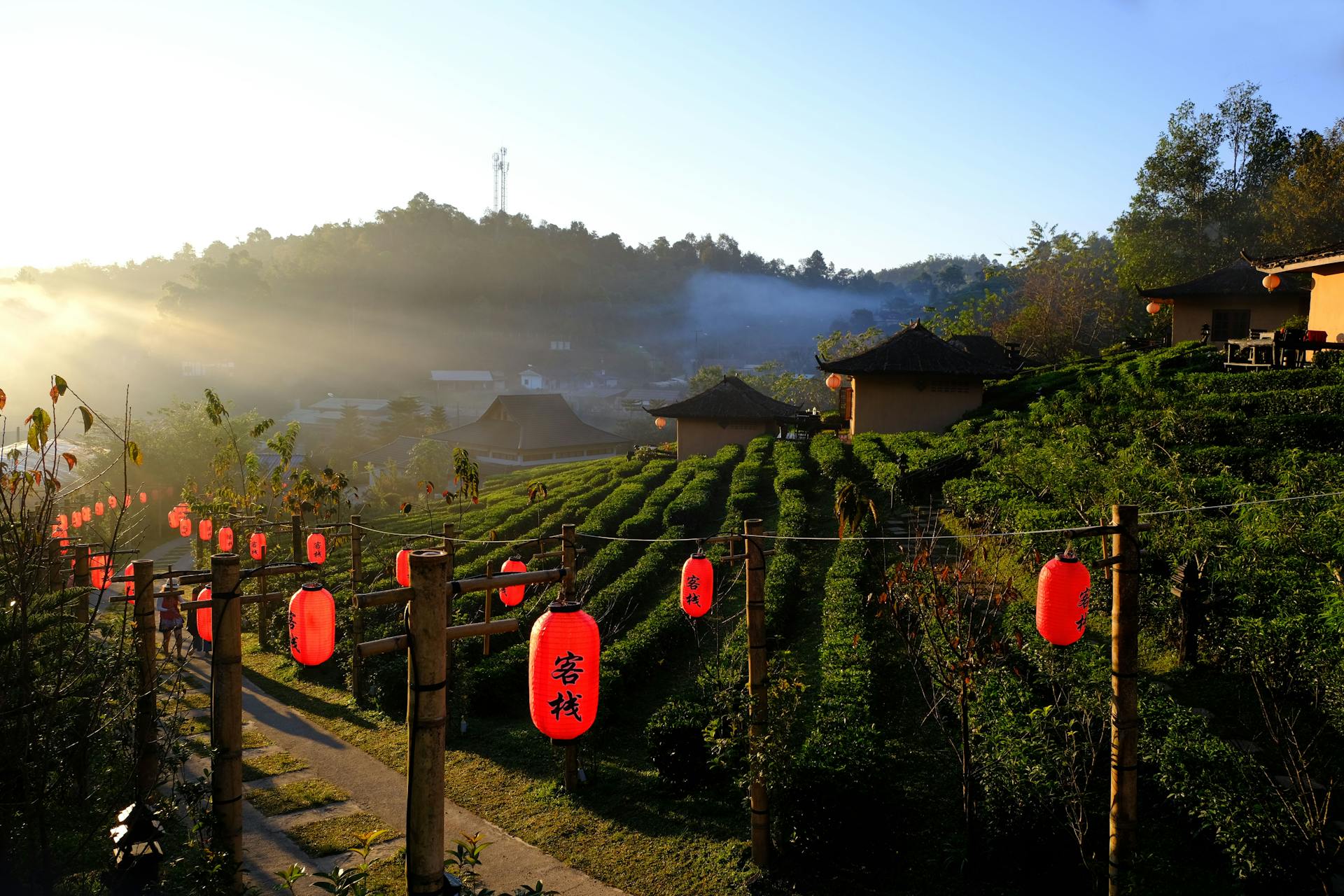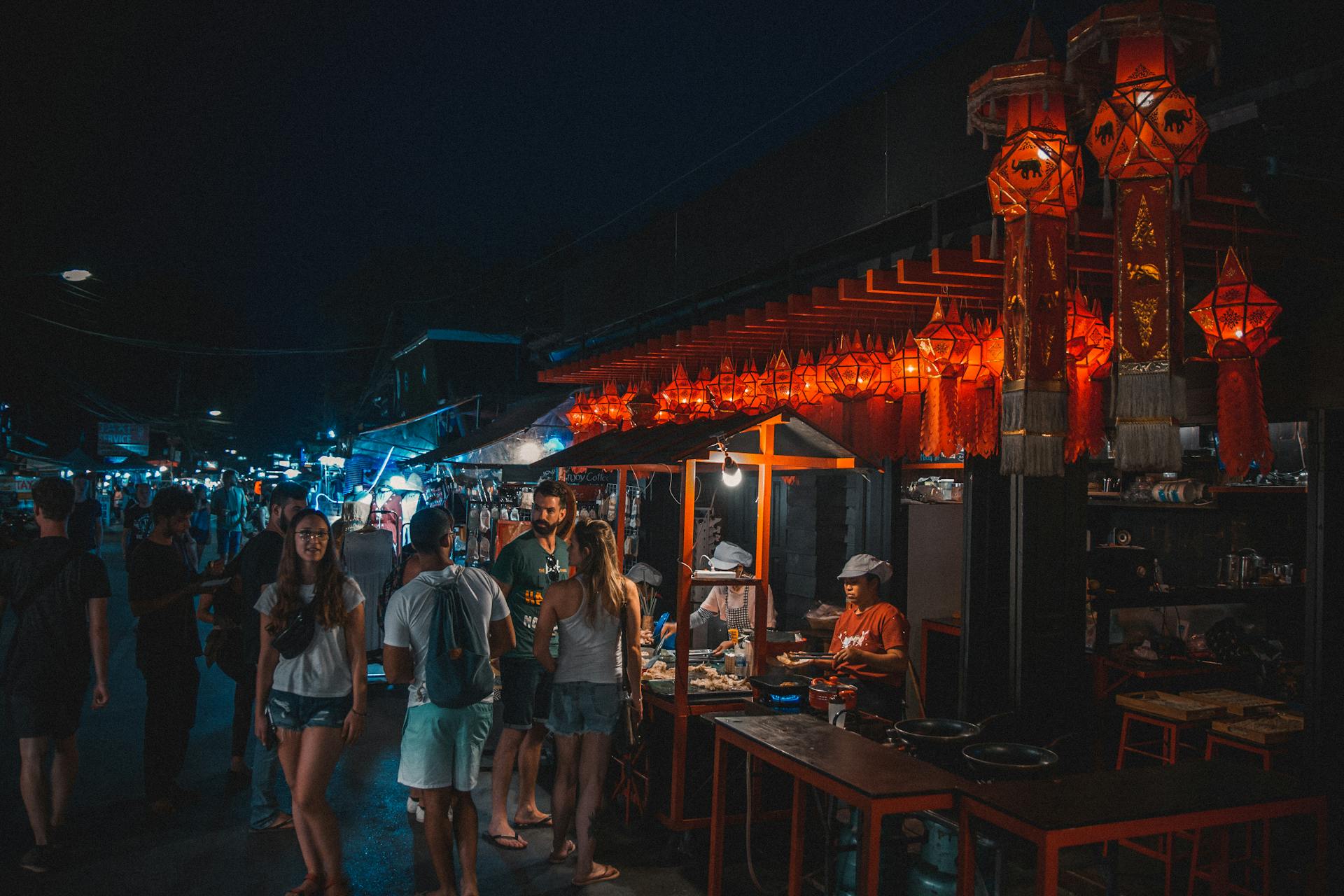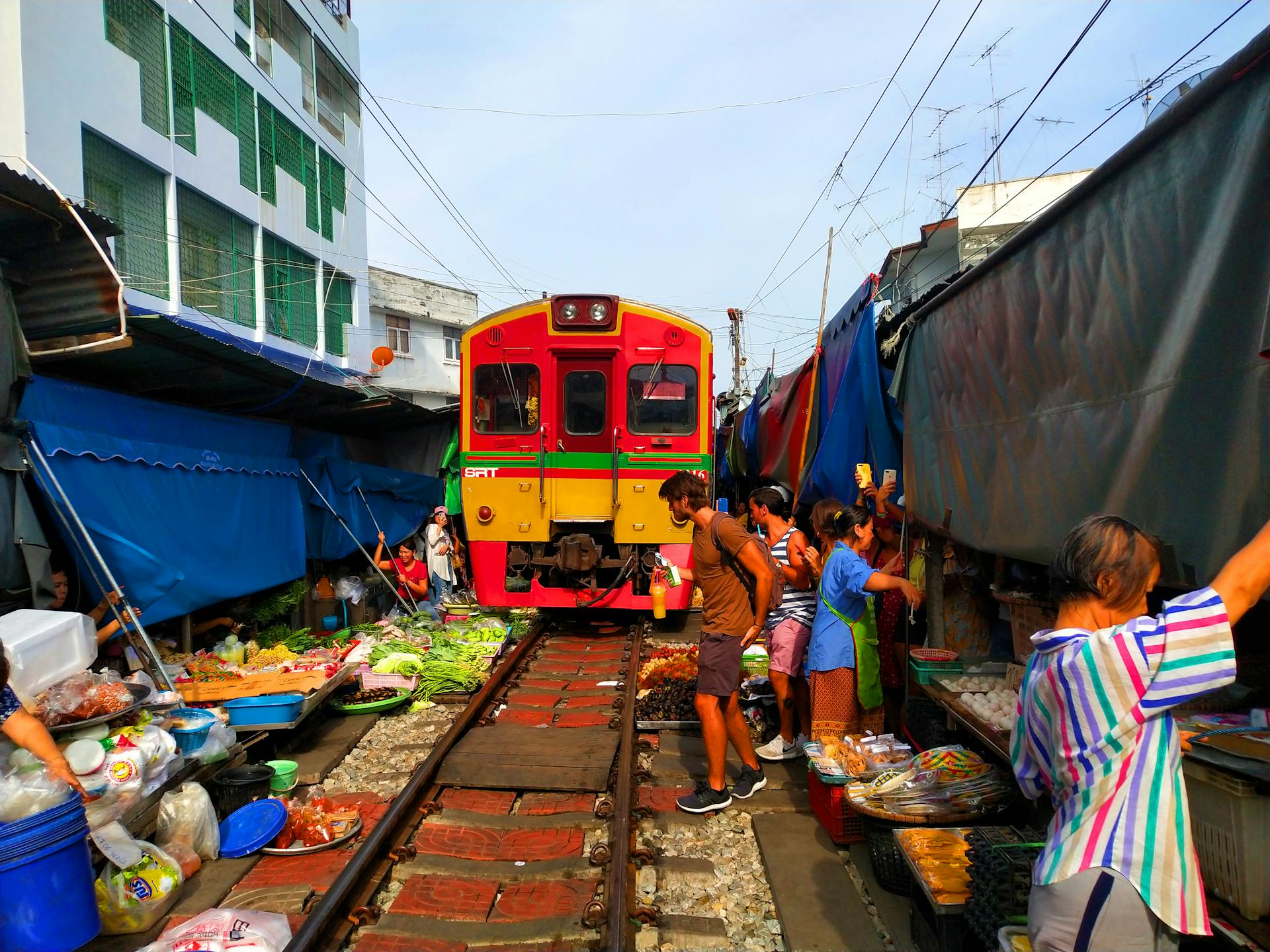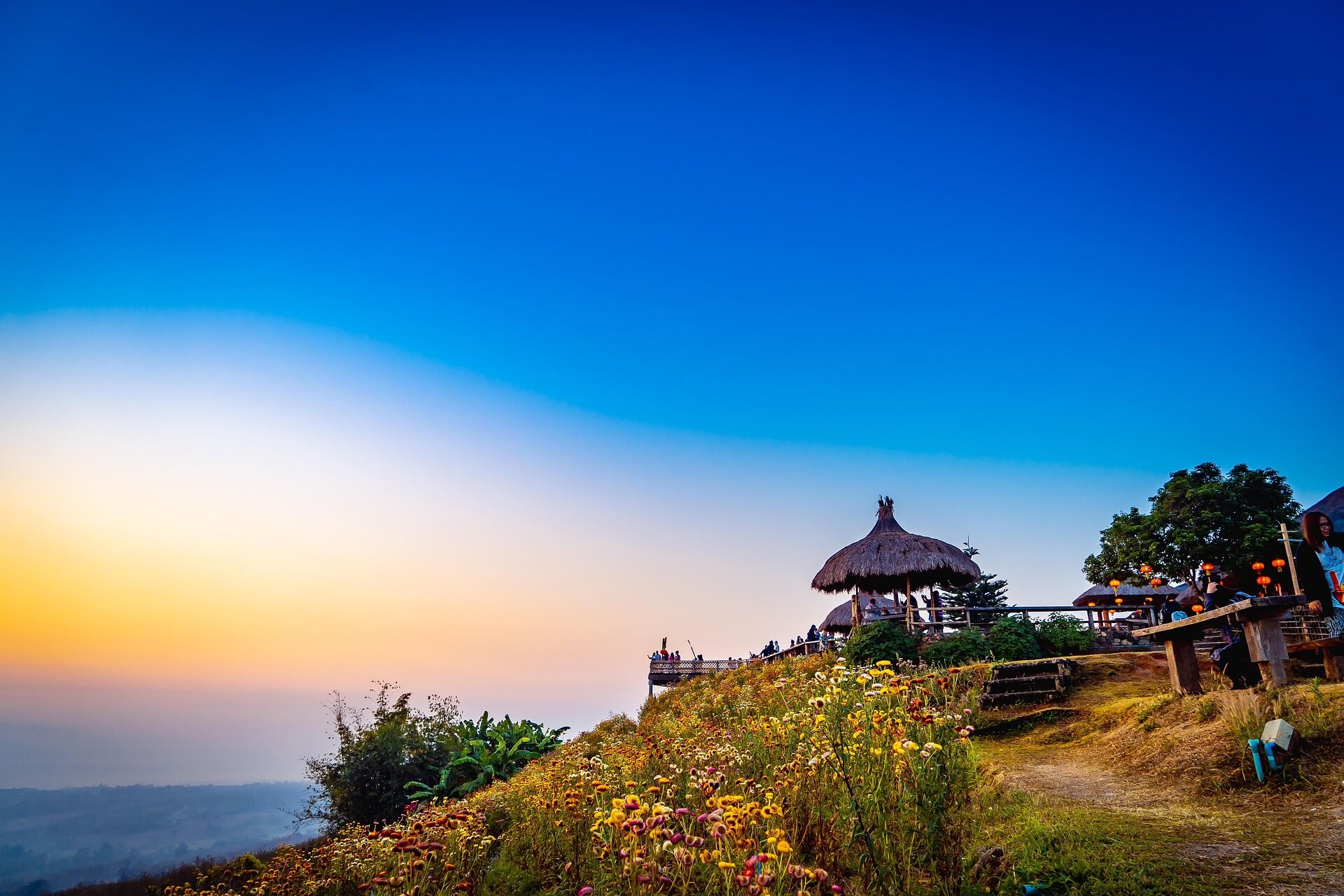Dive into the rich history of Mae Chaem, Thailand with our 2025 guide! Learn about its Lanna roots, hill tribe heritage, eco-friendly Mae Chaem Tours, and top providers for a sustainable adventure with Mae Chaem Travel. Plan your journey today!
Author Bio: Written by Tony Bùi, with over 20 years of experience in the travel industry, personally guiding and organizing tours for over 100,000 travellers across Southeast Asia. This guide draws from firsthand insights, guest feedback from Legend Travel Group surveys, and official sources like en.wikipedia.org, culturetrip.com, weareglobaltravellers.com, and thailandtravel.or.th. Information based on latest data as of August 31, 2025; verify before travel. Reflects Thailand’s updated travel regulations.
Mae Chaem, located in Chiang Mai Province, Thailand at approximately 18.50°N, 98.36°E and an elevation of around 475 meters, is renowned for its serene countryside, traditional Lanna villages, and proximity to Doi Inthanon, Thailand’s highest peak thailandtravel.or.th. A historical gem in a picturesque valley, Mae Chaem attracts visitors for its Lanna Kingdom heritage, hill tribe contributions, and cultural landmarks like Wat Phra That Doi Nok culturetrip.com. Exploring Mae Chaem history with guided Mae Chaem Tours immerses you in the region’s role as a Lanna agricultural hub, its unique textile legacy, and modern cultural preservation efforts en.wikipedia.org. A blend of spiritual significance, historical depth, and cultural vibrancy, Mae Chaem, facilitated by trusted Mae Chaem Travel providers, is ideal for history buffs, cultural enthusiasts, and eco-conscious travelers. Mastering Exploring Mae Chaem History cultural etiquette ensures a respectful journey, enhancing this historical adventure.
Following Thailand’s updated travel regulations in 2025, Mae Chaem is accessible via road from Chiang Mai (2–3 hours) with local transport like songthaews or motorbikes. This guide blends historical insights, practical visiting tips, and sustainable Mae Chaem Travel ideas for a memorable experience.
Exploring Mae Chaem history requires preparation for visas (most nationalities enjoy visa-free entry for 30–60 days; others require a visa, $30–$50). Key historical sites like Wat Phra That Doi Nok and Kosinarai Pond Local Museum are free, with donations ($0.30–$1 or 10–35 THB) appreciated; guided tours cost $20–$100 (700–3,400 THB), and local purchases like handwoven textiles range from $0.30–$10 (10–350 THB). Key sites are accessible by songthaew or motorbike from Chiang Mai. Verify schedules and visa requirements via thailandtravel.or.th.
 Experience Mae Chaem’s history with guided tours (Source: Internet)
Experience Mae Chaem’s history with guided tours (Source: Internet)Lanna Kingdom (13th–18th Century): Mae Chaem, part of Chiang Mai Province, was a significant region in the Lanna Kingdom, serving as an agricultural hub due to its fertile lands along the Ping River watershed. Its strategic location near Doi Inthanon supported rice and corn cultivation, vital to Lanna’s economy en.wikipedia.org.
Administrative Establishment (1908): Mae Chaem was formally established as a district in 1908 as Mueang Chaem, comprising tambons Mae Thap, Tha Pha, Chang Khoeng, and Mae Suek, split from Chom Thong. It was renamed Chang Khoeng in 1917, reduced to a minor district in 1938, renamed Mae Chaem in 1939, and upgraded to a full district in 1956. In 2009, its northern part became Galyani Vadhana District en.wikipedia.org.
Hill Tribe Contributions: Home to ethnic groups like Tai Yuan, Paganyaw, Lua, Hmong, and Lisu, Mae Chaem’s history is enriched by their agricultural practices and textile traditions, particularly the "teen jok" weaving style, which became prominent in the 19th–20th centuries weareglobaltravellers.com.
Modern Cultural Preservation (20th–21st Century): The Kosinarai Pond Local Museum, opened in 2008, showcases Mae Chaem’s textile heritage, while temples like Wat Pa Daed (established 1827) preserve Lanna Buddhist traditions. Recent environmental challenges, like corn monoculture, have prompted sustainable initiatives like the "Energy for All" program by the Electricity Generating Authority of Thailand en.wikipedia.org.
Cultural Significance: Mae Chaem’s history reflects its role as a Lanna agricultural and cultural center, with a unique blend of hill tribe traditions, Buddhist spirituality, and sustainable tourism efforts thailandtravel.or.th.
Wat Phra That Doi Nok: A Lanna-style temple with centuries-old significance, offering spiritual and historical insights (entry: free, donations $0.30–$1 or 10–35 THB, open 8:00 AM–5:00 PM) thailandtravel.or.th.
Wat Pa Daed: Established in 1827, this temple features murals depicting Mae Chaem’s cultural and historical essence (entry: free, donations $0.30–$1 or 10–35 THB, open 8:00 AM–5:00 PM) culturetrip.com.
Kosinarai Pond Local Museum: Opened in 2008, this museum displays "teen jok" textile styles, highlighting Mae Chaem’s weaving heritage (entry: free, donations $0.30–$1 or 10–35 THB, open 9:00 AM–4:00 PM) weareglobaltravellers.com.
Ban Thong Fai Weaving Community (Optional Add-On): A village showcasing traditional "teen jok" weaving, reflecting Mae Chaem’s ethnic heritage since the 19th century (entry: free, donations $0.30–$1 or 10–35 THB, open 8:00 AM–5:00 PM) localvietnam.com.
Cultural etiquette ensures a respectful experience at historical sites during Mae Chaem Tours. Here’s your guide, based on current norms as of August 31, 2025:
Greetings: Offer a “sawasdee” (hello) with a slight bow or wai (hands pressed together); use both hands when paying for purchases or offering donations to show respect, especially at Wat Phra That Doi Nok or Ban Thong Fai.
Dress: Wear modest clothing covering shoulders and knees for temple or village visits; a lightweight scarf ($1 or 35 THB) aligns with local norms culturetrip.com.
Behaviour: Maintain a quiet demeanor at temples or during village visits; ask permission before photographing locals, weavers, or rituals; avoid loud behavior in rural areas. Avoid pointing feet at sacred objects or people, as this is disrespectful in Thai culture. A guest shared: “Respecting Thai customs made our historical exploration profound.”
Customs: Entry to temples and villages is free; donations ($0.30–$1 or 10–35 THB) appreciated; remove shoes in sacred areas; avoid touching sacred items or textiles on display; tipping is not mandatory but appreciated ($0.30–$1 or 10–35 THB); avoid public criticism of the monarchy (penalties apply). Avoid littering to preserve historical sites and villages culturetrip.com.
Tip: Say “khob khun” (thank you) to locals or guides; use eco-friendly practices like carrying reusable water bottles ($2 or 70 THB) to support sustainable Mae Chaem Travel; maintain respect at historical sites. Tony Bùi notes: “In 20 years guiding, I’ve seen respectful travellers thrive in Mae Chaem’s rich historical heritage.”
General Tips:
Language: Carry a phrase card ($1 or 35 THB) for Thai basics like “khob khun”; English is limited in Mae Chaem, so translation apps are useful culturetrip.com.
Respect: Follow temple and village rules (avoid touching artifacts or textiles); avoid disrupting ceremonies; support local artisans with fair purchases in villages.
Navigation: Historical sites like Wat Phra That Doi Nok and Kosinarai Pond Local Museum are accessible by songthaew or motorbike from Chiang Mai; use offline maps (Maps.me) with “Mae Chaem” or “Chiang Mai” for navigation.
Eco-Tip: Use songthaews ($1–$2 or 35–70 THB) or bicycles ($1–$3 or 35–100 THB/day) to reduce emissions, aligning with Thailand’s green tourism goals.
 Capture the authentic charm of Mae Chaem’s historical scene (Source: Internet)
Capture the authentic charm of Mae Chaem’s historical scene (Source: Internet)Below is a curated list of tour options for exploring Mae Chaem history, based on the latest data from en.wikipedia.org, culturetrip.com, weareglobaltravellers.com, and thailandtravel.or.th. Confirm schedules and prices before booking.
Details: Explore Wat Phra That Doi Nok, Wat Pa Daed, Kosinarai Pond Local Museum, or Ban Thong Fai independently; suitable for history enthusiasts; low to moderate difficulty due to rural terrain.
Schedule: Daily; Wat Phra That Doi Nok and Wat Pa Daed open 8:00 AM–5:00 PM (free, donations $0.30–$1 or 10–35 THB); Kosinarai Pond Local Museum open 9:00 AM–4:00 PM (free, donations $0.30–$1 or 10–35 THB); Ban Thong Fai open 8:00 AM–5:00 PM (free, donations $0.30–$1 or 10–35 THB); vibrant during Yi Peng (November).
Cost: Entry: free; donations: $0.30–$1 (10–35 THB); transport (songthaew: $1–$2 or 35–70 THB; bicycle: $1–$3 or 35–100 THB/day); local purchases: $0.30–$10 (10–350 THB).
Location: Mae Chaem, Chiang Mai Province, Thailand.
Eco-Friendly Note: Use songthaews or bicycles to reduce emissions; avoid littering at historical sites or villages.
Tip: Check schedules at thailandtravel.or.th; visit early (6:00 AM) for serenity; a guest noted: “Self-guided historical visits were immersive and authentic.”
Details: 1-day group tour visiting Wat Phra That Doi Nok and Kosinarai Pond Local Museum; includes English-speaking guide, transport from Chiang Mai, lunch, and entry fees; low difficulty.
Schedule: Daily; departs 7:00 AM from Chiang Mai hotels; returns by 4:00 PM.
Cost: $40–$60/person (1,350–2,000 THB, includes transport).
Pick-up/Drop-off: Hotels in Chiang Mai.
Eco-Friendly Note: Group transport with fuel-efficient vehicles minimizes impact; supports local communities.
Tip: Book via legendtravelgroup.com; a guest noted: “Legend’s tour brought Mae Chaem history to life.”
Details: 1-day guided tour visiting Wat Pa Daed and Ban Thong Fai weaving community; includes English-speaking guide, transport from Chiang Mai, lunch, and entry fees; low to moderate difficulty.
Schedule: Daily; departs 6:30 AM from Chiang Mai hotels; returns by 4:00 PM.
Cost: $50–$80/person (1,700–2,700 THB, includes entry).
Pick-up/Drop-off: Hotels in Chiang Mai.
Eco-Friendly Note: Small groups reduce environmental impact; supports local communities.
Tip: Book via localvietnam.com; a guest noted: “The combo tour blended historical and cultural experiences seamlessly.”
Details: 2–3 day tour combining Wat Phra That Doi Nok, Kosinarai Pond Local Museum, and Chiang Mai’s cultural sites; includes English-speaking guide, transport, accommodation, meals, and entry fees; low to moderate difficulty.
Schedule: Daily; departs from Chiang Mai hotels; returns after 2–3 days.
Cost: $100–$250/person (3,400–8,500 THB, includes entries).
Pick-up/Drop-off: Hotels or custom locations in Chiang Mai.
Eco-Friendly Note: Uses eco-lodges and fuel-efficient transport; supports local communities.
Tip: Book Mae Chaem Tours via legendtravelgroup.com or WhatsApp (+84 825862222); a guest noted: “The multi-day tour was a deep dive into Mae Chaem history.”
Self-Guided Exploration: Flexible and authentic, ideal for independent travellers with navigation skills.
Group Historical Tours: Affordable and guided, perfect for Lanna and textile history insights.
Combo Historical and Cultural Tours: Blend historical sites with cultural experiences for a comprehensive journey.
Multi-Day Historical Tours: Offer in-depth exploration of Mae Chaem heritage, perfect for history enthusiasts.
Eco-Friendly Note: Group and multi-day tours use fuel-efficient transport or bicycles, supporting Thailand’s green tourism goals.
 Embrace the vibrant energy of Mae Chaem’s cultural heritage (Source: Internet)
Embrace the vibrant energy of Mae Chaem’s cultural heritage (Source: Internet)Key historical exploration opportunities include:
Songkran: Typically April (lunar calendar), vibrant with water fights and temple ceremonies, reflecting Thai heritage; warm and dry (28–31°C); check dates at thailandtravel.or.th.
Yi Peng: Typically November (lunar calendar), festive with sky lantern releases, tied to Lanna traditions; cool and dry (19–30°C); check dates at thailandtravel.or.th.
Chula Krathin: Typically November–December, a robe-weaving ceremony marking the Buddhist retreat; cool and dry (19–30°C); check dates at thailandtravel.or.th.
Historical Site Visits: Daily, ideal year-round for historical insights; best in cool/dry season (November–February) for comfortable weather; February for serene visits weareglobaltravellers.com.
Cool/dry season (November–February, 19–30°C) is ideal for temple visits, museum tours, and festivals. Wet season (June–October, 20–28°C) suits indoor visits or early morning outings. Morning visits (6:00 AM–10:00 AM) avoid heat or crowds. Verify weather via weather.com.
Key historical exploration opportunities include:
Songkran: Typically April (lunar calendar), vibrant with water fights and temple ceremonies, reflecting Thai heritage; warm and dry (28–31°C); check dates at thailandtravel.or.th.
Yi Peng: Typically November (lunar calendar), festive with sky lantern releases, tied to Lanna traditions; cool and dry (19–30°C); check dates at thailandtravel.or.th.
Chula Krathin: Typically November–December, a robe-weaving ceremony marking the Buddhist retreat; cool and dry (19–30°C); check dates at thailandtravel.or.th.
Historical Site Visits: Daily, ideal year-round for historical insights; best in cool/dry season (November–February) for comfortable weather; February for serene visits weareglobaltravellers.com.
Cool/dry season (November–February, 19–30°C) is ideal for temple visits, museum tours, and festivals. Wet season (June–October, 20–28°C) suits indoor visits or early morning outings. Morning visits (6:00 AM–10:00 AM) avoid heat or crowds. Verify weather via weather.com.
Online Platforms: Book Mae Chaem Tours via localvietnam.com, legendtravelgroup.com, or thailandtravel.or.th ($20–$100). Provide pick-up details (e.g., Chiang Mai hotels); e-tickets are acceptable, but printing is recommended.
Tour Operators: Contact agencies like Legend Travel Group for bundled tours with Wat Phra That Doi Nok, Kosinarai Pond Local Museum, or Chiang Mai.
Direct: Entry to temples and museums is free; donations ($0.30–$1 or 10–35 THB) appreciated; book guided tours via local agencies in Chiang Mai (e.g., +66 2 266 9981); confirm schedules via thailandtravel.or.th.
Eco-Tip: Use digital tickets to reduce paper waste; opt for songthaews ($1–$2 or 35–70 THB) or bicycles ($1–$3 or 35–100 THB/day) to minimize emissions.
Tip: Book early for festivals (April, November); arrive by 6:00 AM for temples or museums; carry small THB notes for donations or purchases; confirm visa requirements ($30–$50 if needed).
 Begin your historical exploration with Mae Chaem’s tranquil ambiance (Source: Internet)
Begin your historical exploration with Mae Chaem’s tranquil ambiance (Source: Internet)Pack for a comfortable, sustainable visit:
Documents: Passport (valid 6+ months), Thailand visa ($30–$50 if required), wallet ($2 or 70 THB), tour bookings.
Clothing: Modest clothing covering shoulders and knees for temple or village visits; lightweight scarf ($1 or 35 THB); quick-dry clothing and raincoat ($2 or 70 THB) for wet season; lightweight clothing like cotton or linen and light jacket ($3 or 100 THB) for dry season; waterproof shoes ($3 or 100 THB); hat ($2 or 70 THB).
Essentials: Reusable water bottle ($2 or 70 THB); snacks ($0.30–$1 or 10–35 THB, e.g., khao soi); small backpack ($2 or 70 THB); sunscreen ($1 or 35 THB); insect repellent ($1 or 35 THB).
Tech: Phone with translation apps (e.g., Google Translate); charger ($3–$5 or 100–175 THB); local SIM ($2–$3 or 70–100 THB); waterproof camera ($6 or 200 THB) for photos (with permission).
Eco Items: Reusable tote ($1 or 35 THB) for purchases; phrase card ($1 or 35 THB) with Thai basics.
Extras: Small THB notes for donations or purchases; small first aid kit ($2 or 70 THB); umbrella ($2 or 70 THB) for wet season; money belt ($2 or 70 THB) for valuables. Tip: Pack light (1 small bag, max 5 kg); reusable items support sustainability.
Historical Site Visit Costs
Self-Guided Exploration: Entry: free (temples, museum, villages); donations: $0.30–$1 (10–35 THB); transport (songthaew: $1–$2 or 35–70 THB; bicycle: $1–$3 or 35–100 THB/day).
Group Historical Tours: $40–$60 (1,350–2,000 THB, includes transport).
Combo Historical and Cultural Tours: $50–$80 (1,700–2,700 THB, includes entry).
Multi-Day Historical Tours: $100–$250 (3,400–8,500 THB, includes entries). Transport Costs (for Self-Guided Visits)
Songthaew: $1–$2 (35–70 THB).
Bicycle: $1–$3 (35–100 THB/day).
Motorbike: $3–$5 (100–175 THB/day). Other Costs
Donations: $0.30–$1 (10–35 THB).
Local Snacks (e.g., khao soi, sai ua): $0.30–$1 (10–35 THB).
Souvenirs (e.g., teen jok textiles, crafts): $0.30–$10 (10–350 THB). Total Daily Cost (Per Person)
Budget: $20–$50 (self-guided, snacks, transport, entry).
Mid-range: $50–$80 (group tour, purchases).
Luxury: $80–$150 (private tour, premium souvenirs). Tip: Budget $20–$150 for tours, donations, or transport, and $0.30–$10 for purchases or add-ons.
Historical Tips: Visit Wat Phra That Doi Nok for Lanna architecture; explore Kosinarai Pond Local Museum for textile history; see Wat Pa Daed for 19th-century murals; visit Ban Thong Fai for weaving traditions; purchase teen jok textiles from villages.
Etiquette: Use “sawasdee” greeting; dress modestly; stay respectful at historical sites and villages; avoid touching artifacts or textiles; respect locals during ceremonies.
Access: Choose self-guided visits for flexibility, group tours for guided insights, or multi-day tours for deeper exploration.
Schedules: Temples and museums open 8:00 AM–5:00 PM; peak crowds in cool/dry season (November–February); book early for festivals (April, November).
Sustainability: Use songthaews or bicycles; carry reusable items; support local artisans with fair purchases.
Navigation: Use offline maps (Maps.me) with “Mae Chaem” or “Chiang Mai.”
Weather: Cool/dry season (Nov–Feb, 19–30°C) ideal; wet season (Jun–Oct, 20–28°C) suits indoor visits; check forecasts via weather.com.
Safety Note: Secure valuables with a money belt ($2 or 70 THB); beware of pickpocketing in Chiang Mai markets; carry emergency numbers (Police: 191, Tourist Police: 1155).
What is the history of Mae Chaem? A Lanna Kingdom agricultural hub, established as a district in 1908, enriched by hill tribe textile traditions and modern cultural preservation en.wikipedia.org.
What are key historical sites in Mae Chaem? Wat Phra That Doi Nok, Wat Pa Daed, Kosinarai Pond Local Museum, and Ban Thong Fai thailandtravel.or.th.
How much are entry fees for historical sites? Entry: free; donations: $0.30–$1; guided tours: $20–$100.
How do I book historical tours? Book via localvietnam.com, legendtravelgroup.com, or local agencies; confirm schedules.
How do I reach historical sites? Use songthaews or bicycles; tours include transport.
Are eco-friendly tours available? Yes, group tours with fuel-efficient transport or bicycles; check localvietnam.com.
Enhance your Mae Chaem historical journey with eco-conscious tours from Legend Travel Group:
Mae Chaem Historical Eco-Tour ($40–$60/person, 1 day): Guided temple and museum tour with sustainable practices.
Mae Chaem History and Culture Trail ($80–$150/person, 2 days): Combine historical sites with eco-friendly transport.
Thailand Explorer ($150–$250/person, 3 days): Multi-site adventure with eco-lodges and community-focused activities. Prices include guides, transport, and fees; group discounts available. Explore options at legendtravelgroup.com or contact sales@legendtravelgroup.com / WhatsApp (+84825862222) for your Mae Chaem Travel plans.
Exploring Mae Chaem History with cultural etiquette—modest attire, polite greetings like “sawasdee,” and respectful behavior—unlocks a profound journey through this Chiang Mai countryside gem. With tour costs from $20–$250, eco-friendly Mae Chaem Tours, and sites like Wat Phra That Doi Nok and Kosinarai Pond Local Museum, this trip offers immersion and sustainability. Whether choosing a self-guided or guided experience with Mae Chaem Travel, visit early and respect local customs for the best experience. For more guides, check trusted resources like thailandtravel.or.th. Safe travels!
Sources:
Historical Information: en.wikipedia.org, culturetrip.com, weareglobaltravellers.com
Travel Details: thailandtravel.or.th
Favorite experiences booked by travelers